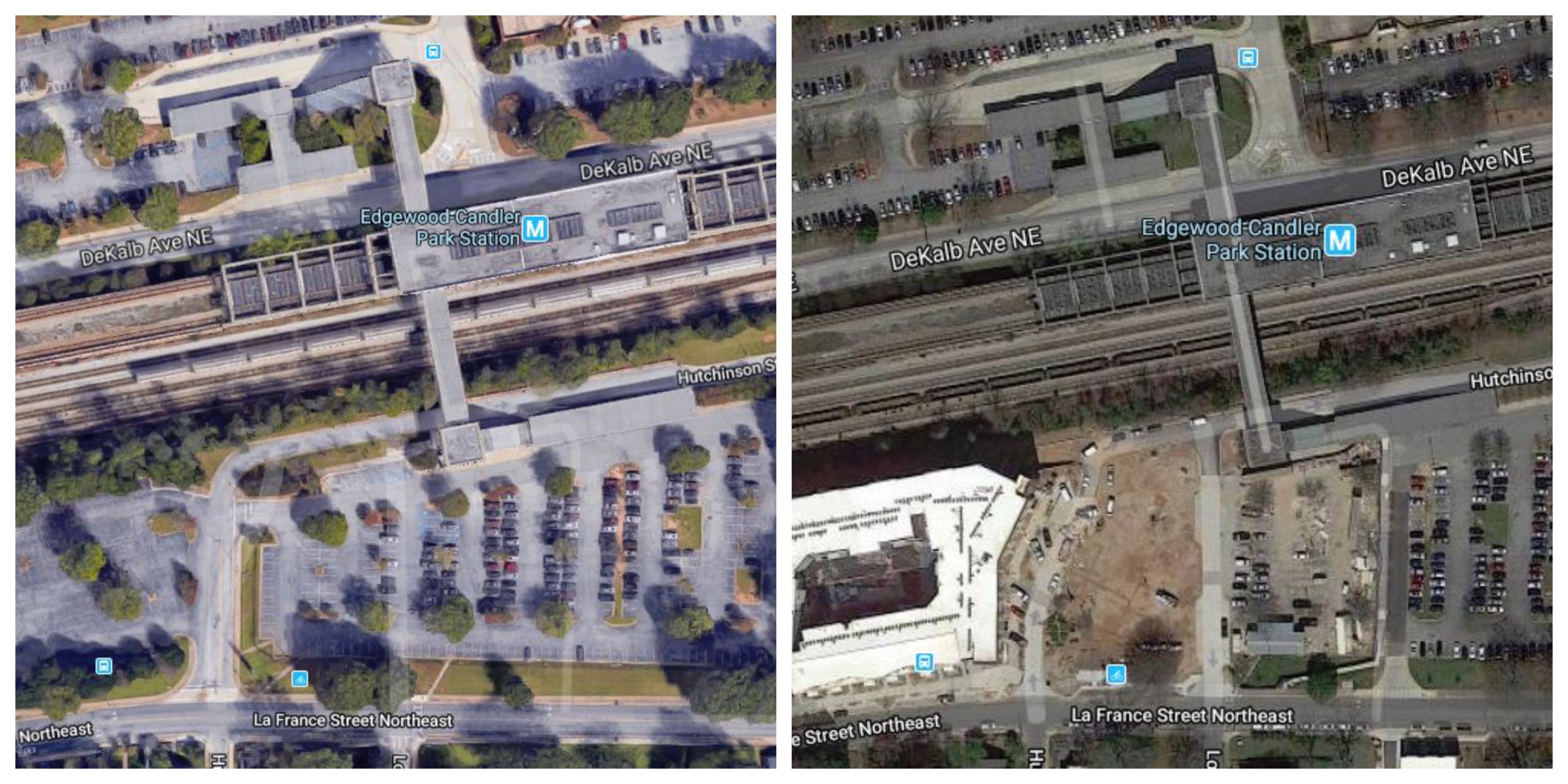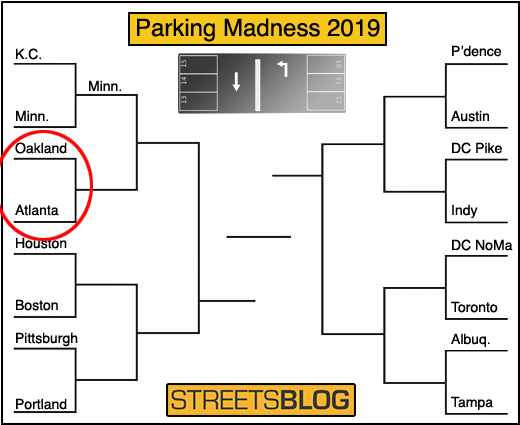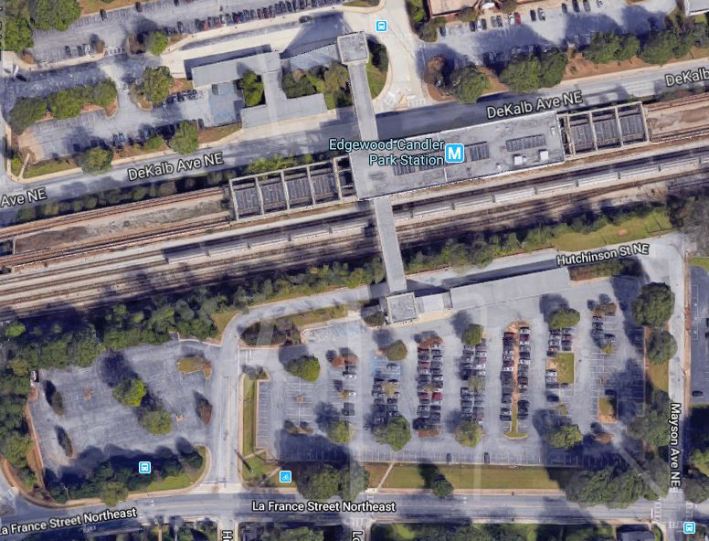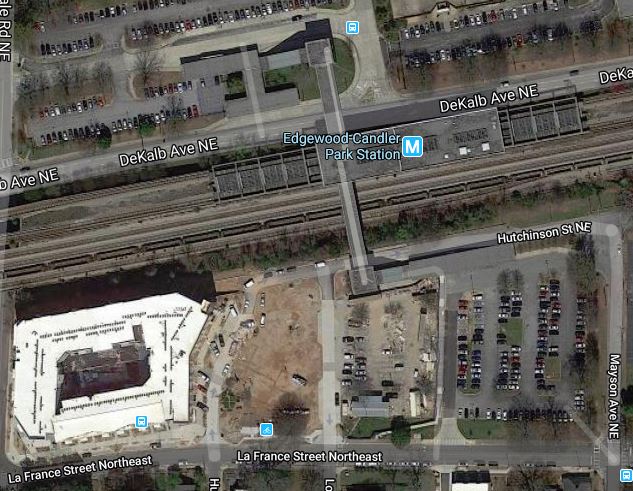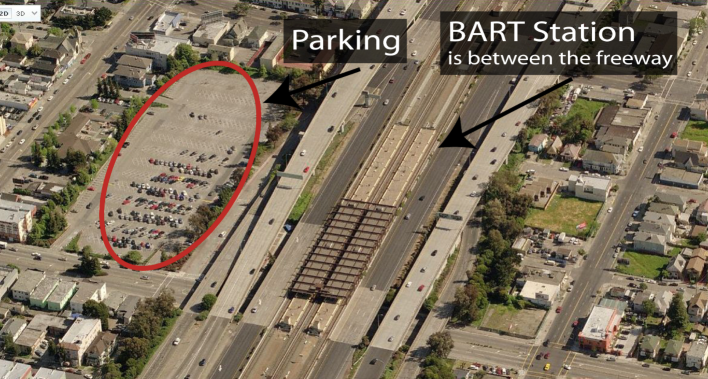We're on to our second round one match in this year's Parking Madness competition — comparing different cities that have repaired their parking craters with useful infill development: more city!
This competition highlights a really hopeful trend underway in cities; Parking craters all over the country are disappearing. In our first matchup, Minneapolis knocked off a formidable contender in Kansas City by a decisive 64 percent to 36 percent final score.
Today's matchup features two former parking craters next to transit stations in Atlanta and Oakland.
Atlanta
The photos below show the Candler Park MARTA Station on the east side of Atlanta.
It was submitted to the competition by reader Carl Holt, who writes:
Atlanta's transit system built a lot of Park and Ride stations in its historic, streetcar suburbs. Edgewood/Candler Park was part of the first stations to open in 1979, it is located three miles outside of Downtown Atlanta. MARTA's Edgewood/Candler Park was the first transit-oriented development built on existing surface park-and-ride lot. It meets MARTA's goal of affordable units, has a small buried parking garage. Phase II includes a public greenspace and commercial space.
Atlanta's transit agency, MARTA, deserves credit for taking the lead in redeveloping parking lots by its rail stations, and trying to include affordability. These developments produce more housing options for Atlantans in walkable areas and help boost ridership by expanding the population living near transit.
Here's a great roundup from Curbed of all the projects MARTA has helped developed.
Oakland
Next up, we're looking at the MacArthur BART Station in Oakland California. This submission comes from reader Adriana Valencia, who notes, as you'll see, that it's still under construction.
Valencia writes:
Still in-progress. But impressive transformation nevertheless! The BRIDGE housing component is already done, a parking structure is done (it's what they did first.) Parcels C and D are either open or about to (maccommons.com) and the Parcel B tower is on its fifth or sixth story of a 20+-story tower.

One really nice feature of both of these projects is that they include some affordable housing. Transit-oriented development that includes affordable housing is really important if transit agencies are trying to boost ridership, because lower-income people rely on transit much more than higher-income.
Which deserves to go on to the second round? (And stay tuned for our next first-round battle, Houston vs. Boston, later in the week.)
